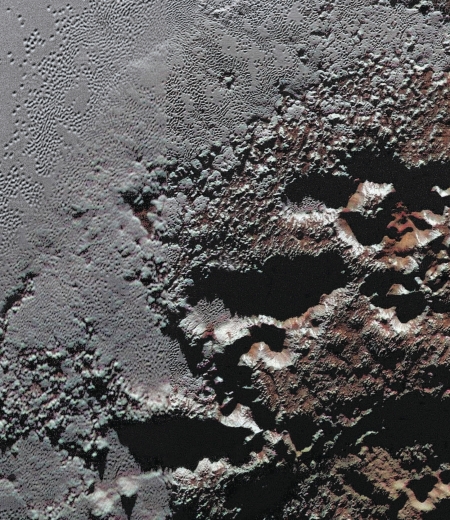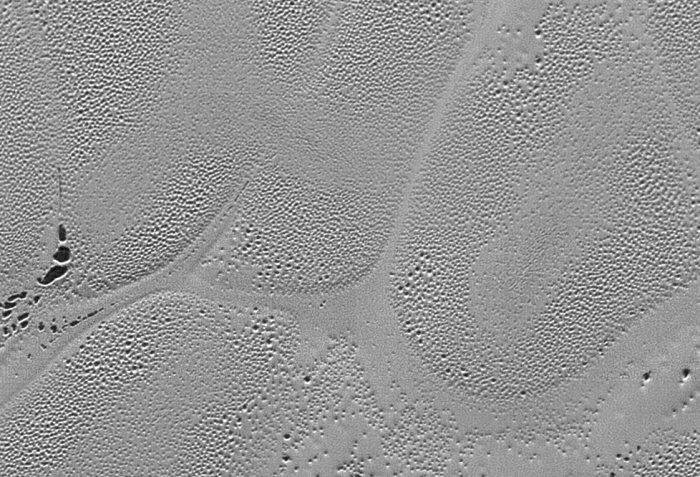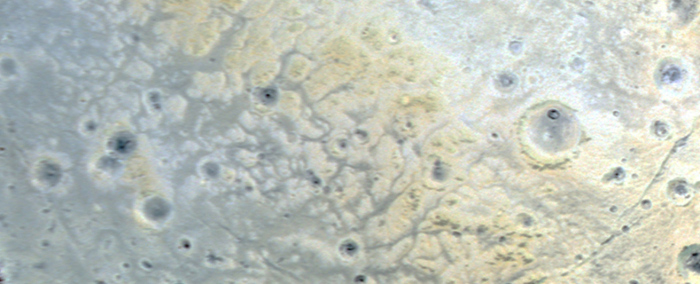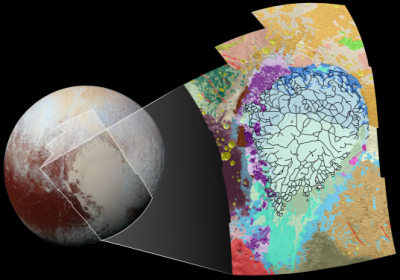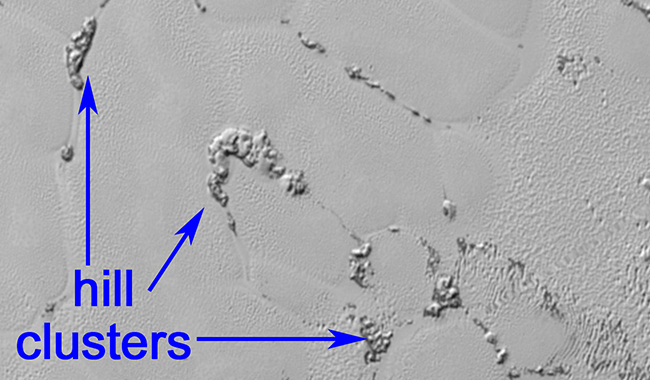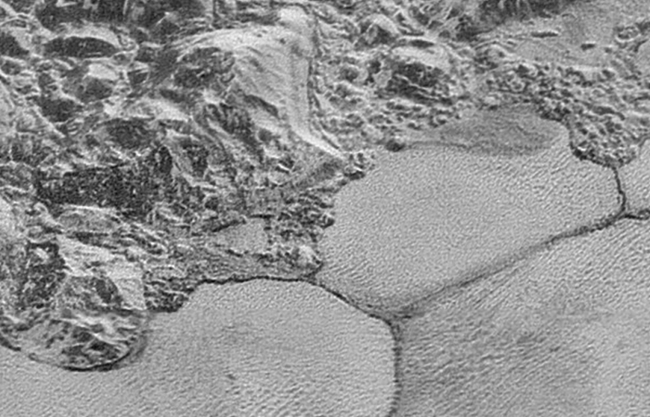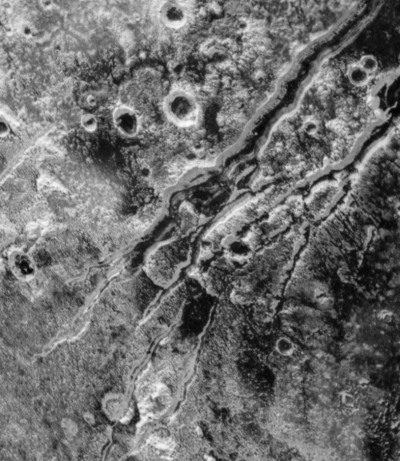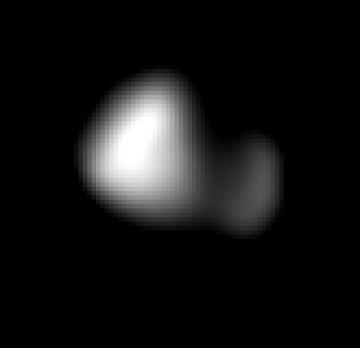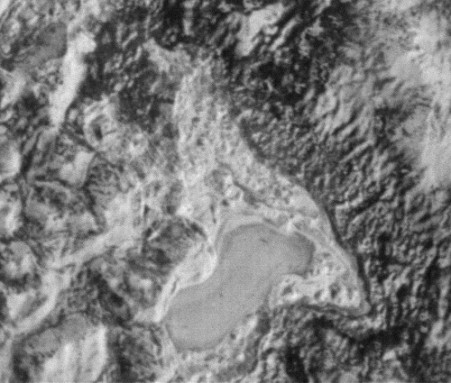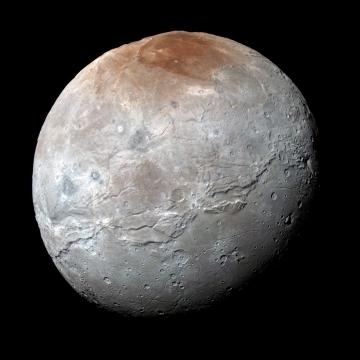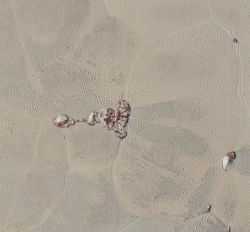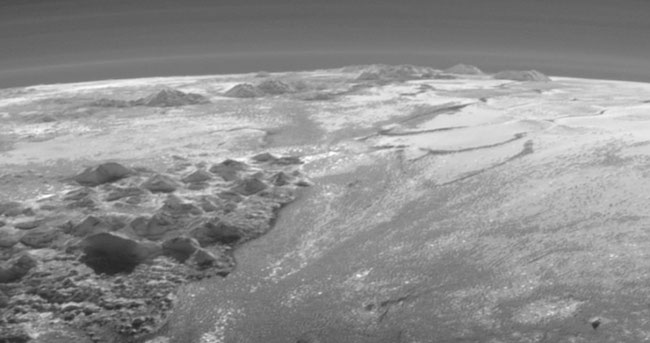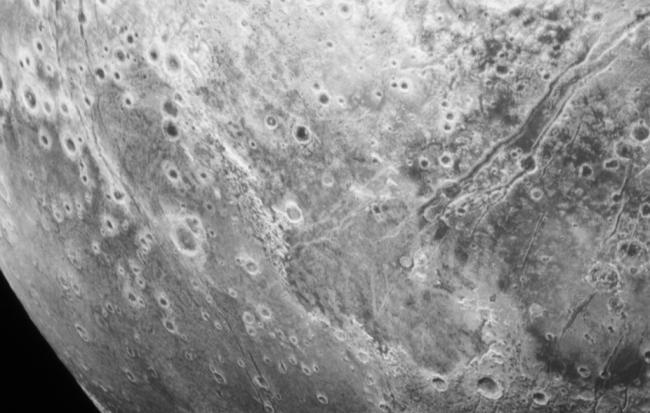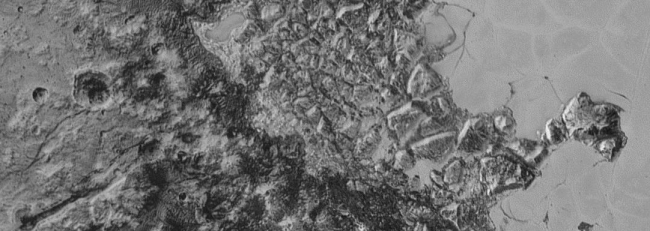The New Horizons science team today published five papers summarizing what they have so far learned from the data obtained during last year’s July 14 fly-by and since downloaded.
Two of the many discoveries are to me the most interesting: The first illustrates Pluto’s strange and very active geology:
Age-dating of Pluto’s surface through crater counts has revealed that Pluto has been geologically active throughout the past 4 billion years. Further, the surface of Pluto’s informally named Sputnik Planum, a massive ice plain larger than Texas, is devoid of any detectable craters and estimated to be geologically young – no more than 10 million years old.
Moreover, the materials that cause Pluto to be geologically active are much more complicated than anything on Earth:
Scientists studying Pluto’s composition say the diversity of the planet’s landscape stems from eons of interaction between highly volatile and mobile methane, nitrogen and carbon monoxide ices with inert and sturdy water ice. “We see variations in the distribution of Pluto’s volatile ices that point to fascinating cycles of evaporation and condensation,” said Will Grundy, from Lowell Observatory in Flagstaff, Arizona, and lead author of the composition paper. “These cycles are a lot richer than on Earth, where there’s really only one material that condenses and evaporates – water. On Pluto, there are least three materials, and while they interact in ways we don’t yet fully understand, we definitely see their effects all across Pluto’s surface.”
The second discovery that fascinates me has to do with the formation of Pluto and all its moons:
The high albedos (reflectiveness) of Pluto’s small satellites are entirely different from the much lower albedos of the small bodies in the general Kuiper Belt population (which range from about 5 to 20 percent). This difference lends further support to the idea that these satellites were not captured from the general Kuiper Belt population, but instead formed by agglomeration in a disk of material produced in the aftermath of the giant collision that created the entire Pluto satellite system.
In other words, Pluto and its moons are not a collection of different Kuiper Belt objects brought together over time. Instead, they formed together.
